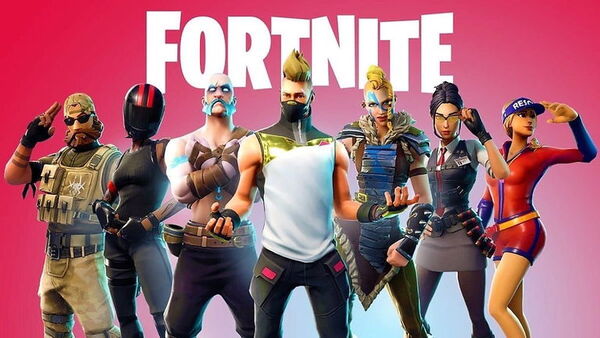Introduction
Call of Duty has become synonymous with fast-paced action, military realism, and blockbuster gaming experiences. Since its debut in 2003, this franchise has expanded into one of the most commercially successful and culturally significant properties in video game history. Spanning multiple timelines, warzones, and gameplay modes—from WWII battlefields to futuristic space combat—the Call of Duty series has continually evolved to keep pace with industry trends and player demands.
In this comprehensive 2000+ word article, we’ll explore the full history and impact of Call of Duty, organized by key eras in its development. Each section highlights major innovations, gameplay shifts, pros and cons, and how the franchise shaped—and was shaped by—the gaming world. Whether you're a nostalgic fan or a newcomer, this is your complete guide to understanding why Call of Duty is still standing as a pillar of the FPS genre.
Origins in World War II: Call of Duty (2003–2006)
The original Call of Duty launched in 2003, developed by Infinity Ward and published by Activision. It brought players into gritty, historically accurate WWII scenarios, showcasing the war from multiple perspectives—American, British, and Soviet soldiers.
At the time, the market was saturated with WWII shooters, but Call of Duty set itself apart with its cinematic intensity, squad-based combat, and immersive storytelling. The original game emphasized realism, with limited HUD elements and a focus on using cover, flanking, and suppressive fire.
Pros:
-
Authentic WWII atmosphere
-
Strong mission variety
-
Groundbreaking sound and visual design for its time
Cons:
-
Short campaign length
-
Limited multiplayer functionality
Rating: 8.5/10
The Rise of the Franchise: CoD 2 and 3 (2005–2006)
Call of Duty 2 refined everything its predecessor introduced. It improved the AI, weapon feedback, and visuals, becoming a launch title for the Xbox 360 and helping propel the console to success.
Call of Duty 3, developed by Treyarch, shifted the narrative to focus more on vehicular combat and squad-based mechanics. Although not as critically acclaimed as CoD 2, it demonstrated the franchise's potential for annualized releases and different developer collaborations.
H3: Key Features Introduced
-
Regenerating health system in CoD 2
-
Console-optimized controls and visuals
-
Cinematic cutscenes and scripted events
Rating: 8.2/10
A New Era Begins: Modern Warfare (2007–2009)
Call of Duty 4: Modern Warfare was a watershed moment for the series—and for the FPS genre. It abandoned WWII in favor of contemporary conflicts, introducing players to elite military units, terrorist plots, and urban warfare.
The game’s campaign was tightly written, with iconic missions like “All Ghillied Up” and “Shock and Awe.” However, its real revolution was multiplayer, which introduced killstreaks, loadouts, perks, and progression systems—features now standard in online shooters.
Modern Warfare 2 and 3 continued the narrative, offering larger-than-life campaigns and expanding multiplayer with new modes and weapons.
Pros:
-
Genre-defining multiplayer systems
-
Fast, fluid gunplay
-
Memorable campaign moments
Cons:
-
Some maps favored camping or spawn trapping
-
Unbalanced killstreaks in early versions
Rating: 9.5/10
The Black Ops Phenomenon (2010–2012)
Treyarch stepped up with Call of Duty: Black Ops, a Cold War-era thriller featuring mind control, covert operations, and conspiracies. It had a more narrative-driven campaign compared to Infinity Ward’s bombastic style.
Multiplayer introduced new weapons, prestige options, and custom emblems, while Black Ops Zombies became a cultural icon. Players fought waves of undead in increasingly complex maps, unlocking lore, secrets, and gameplay depth.
Black Ops II later introduced branching storylines, futuristic warfare, and the Pick 10 class system, giving players more control over loadouts.
H4: Innovations in Black Ops
-
Introduction of the RC-XD and other tactical killstreaks
-
Deep Zombies mode with full storyline
-
Non-linear campaign missions
Pros:
-
Strong narrative and historical immersion
-
Addictive and varied multiplayer
-
Groundbreaking Zombies experience
Cons:
-
Balancing issues with futuristic equipment
-
Some campaign missions were overly scripted
Rating: 9.3/10
Going Futuristic: Advanced Warfare & Infinite Warfare (2014–2016)
Sledgehammer Games joined the development cycle with Advanced Warfare, introducing exo-suits, boost jumps, and vertical mobility. The game pushed CoD into sci-fi territory, focusing on futuristic weapons and combat systems.
Infinite Warfare took the idea even further, offering space combat, zero-G gunfights, and a branching mission structure in its campaign. While critically praised for its story, the game faced backlash from fans desiring a return to boots-on-the-ground combat.
Pros:
-
Innovative movement systems
-
Unique settings and storytelling
-
Polished visuals and futuristic weapons
Cons:
-
Alienated longtime fans of grounded gameplay
-
Increased complexity in multiplayer loadouts
Rating: 7.8/10
Return to Roots: WWII (2017) & Modern Warfare Reboot (2019)
Call of Duty: WWII marked a return to historical settings. With a visceral and gritty tone, the game removed futuristic elements and emphasized squad-based combat, traditional killstreaks, and historical accuracy.
In 2019, Infinity Ward released a reboot of Modern Warfare, updating visuals, reimagining characters like Captain Price, and introducing cross-platform play and the Gunsmith weapon customization system. This title successfully blended classic gameplay with modern tech, breathing new life into the franchise.
Pros:
-
Strong single-player campaigns
-
Balanced multiplayer
-
Gunsmith and cross-play features added depth
Cons:
-
WWII multiplayer felt limited compared to modern entries
-
Some bugs and performance issues at launch
Rating: 9.0/10
The Rise of Warzone and Battle Royale (2020–Present)
Call of Duty: Warzone, released in 2020, transformed the franchise by entering the free-to-play battle royale space. Built on the Modern Warfare engine, Warzone featured 150-player lobbies, loadout drops, the Gulag mechanic, and cross-platform support.
It became one of the most popular battle royales globally, challenging games like Fortnite and PUBG. Its seasonal model tied into releases like Black Ops Cold War and Modern Warfare II (2022), creating a shared progression system across games.
H3: Key Warzone Features
-
Realistic ballistics and time-to-kill
-
Revive and contract systems
-
Customizable operators and skins
Pros:
-
Highly replayable and social
-
Integration with mainline CoD titles
-
Frequent updates and events
Cons:
-
File sizes and patches are enormous
-
Weapon balancing issues
Rating: 9.2/10
Vanguard and the Struggles of Innovation (2021)
Call of Duty: Vanguard, developed by Sledgehammer, revisited WWII with a global story featuring multiple protagonists. Despite its strong campaign and graphical fidelity, it received a lukewarm reception.
Multiplayer lacked the innovation of previous titles, and integration with Warzone led to complications with weapon balance and identity. Zombies mode, developed by Treyarch, was criticized for being underwhelming at launch.
Pros:
-
Visually stunning environments
-
Diverse campaign perspectives
-
Deep weapon customization
Cons:
-
Weak Zombies mode
-
Gameplay felt repetitive compared to past titles
Rating: 7.5/10
Modern Warfare II (2022) and the Future of CoD
Modern Warfare II (2022) built upon the success of the 2019 reboot, offering refined mechanics, new movement systems like Dolphin Diving, and improvements to AI behavior in campaign and co-op modes.
Its multiplayer introduced weapon platform systems, enhanced Gunsmith 2.0, and a more tactical pacing. Though praised for visuals and campaign quality, post-launch monetization drew criticism, especially around Battle Passes and skin pricing.
Looking ahead, the franchise appears set to blend live-service elements with story-driven content, expanding the shared universe across multiple entries.
H4: Future Innovations Expected
-
Greater integration with mobile and cloud platforms
-
Evolving Warzone with AI zones and new traversal
-
Narrative expansion with seasonal storytelling
Rating: 8.8/10
Cultural Impact and Franchise Legacy
With over 400 million copies sold, Call of Duty is among the top-grossing game franchises of all time. It’s inspired novels, action figures, competitive esports leagues, and upcoming film/TV adaptations.
The franchise has been both a mirror and a molder of gaming trends, pioneering mechanics like XP systems, killstreaks, seasonal battle passes, and real-world military consultants in development.
Whether you’re reminiscing over Nacht der Untoten zombies or clutching the final circle in Warzone, Call of Duty has left its mark.
H4: Top 5 Most Influential Features
-
Killstreak and Perk Systems
-
Cinematic Campaigns with Global Politics
-
Warzone’s Free-to-Play Model
-
Cross-Platform Multiplayer
-
Esports and Call of Duty League (CDL)
Conclusion
Call of Duty has evolved from a humble WWII shooter into a multi-platform gaming juggernaut. It’s a series that refuses to stay stagnant, constantly reinventing itself across decades of gaming. Through peaks and valleys, it has retained its core identity: fast, fluid, and ferociously fun first-person shooting.
Despite criticisms around monetization, innovation fatigue, or content overload, the franchise’s strengths remain in its tight gameplay mechanics, rich multiplayer experience, and cinematic storytelling. Whether you dropped into Normandy, stormed Verdansk, or hacked enemy intel in Black Ops, Call of Duty has offered unforgettable moments.
Final Series Rating: 9.3/10 — A legacy built on bullets, strategy, and relentless reinvention.




























